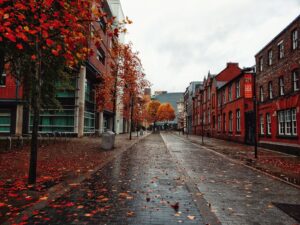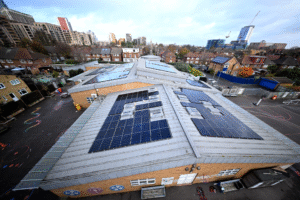A new analysis of the benefits from planting forests on unused land argues a financial case for increasing tree cover.
According to climate tech startup Arbonics, there are around 14m hectares of land going to waste across Europe. Equivalent to the size of Portugal and the Netherlands, much of this could be put to good use through afforestation – the process of planting the saplings for entirely new forests where none previously existed.
If that happened, a total of £2bn could be added to the region’s economy through associated subsidies and carbon credits. The impact on emissions would also be significant. Once mature enough to capture carbon from the atmosphere, these forests could balance out the current emissions produced by the populations of London and Berlin combined.
Of course, there are drawbacks. Firstly, at least some of the area earmarked in the research could be used for other things – not least agriculture, which faces mounting pressure and rising demand year-on-year. But, even if we were to discount all land that could be used for farming, leaving only that which is too low quality for afforestation, as much as 9.3m tonnes of CO2 could be captured each year by filling the space with trees. That balances out emissions from 1.5m people, according to the latest data on carbon output of the average European. Should the concept spread to the US, where 60m hectares have been identified, the country could benefit from 535m tonnes of COW removal.
‘Nature provides everything we need to turn the tide on climate change but unlocking the power and potential of nature is easier said than done. Landowners across the world are sitting on a wealth of resources that can benefit both the planet, and their bottom line. Many just don’t even realise it,’ said Kristjan Lepik, Arbonics co-founder and CEO.
It’s also important to note the level of mythology that exists around tree planting projects. Only with the an appropriately balanced combination of species – chosen for their suitability in the specific location – do such efforts actually deliver on the ambitions of those behind them. As was investigated by our sister publication, Air Quality News, in a 2022 feature on the damage inflicted by monoculture and for-profit plantations.
Thankfully, Arbonics appears to understand this. The company specialises in taking data on things like existing trees and shrubs, soil type and content of an area, and helps land owners understand what could and should be done with that plot. A report offers customers recommendations on which trees to plant and where to maximise impact, and the potential rewards associated with the resulting reduction in emissions. Those looking for a taste can find an online calculator offering a quick estimate on the potential carbon earnings from any piece of land.
Image: George Bakos
















